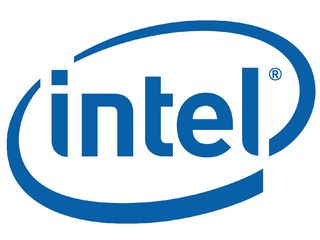Intel Wants To Make Custom SoCs
Intel wants to branch out and make SoCs for non-competitors like Motorola, Apple and Sony.

Softpedia reports that Intel is looking to branch out and develop custom SoCs – communications and consumer electronic chips – for companies like Cisco, EMC and Motorola that aren't direct competitors.
One reason for this change of heart, according to analysts, is based on Intel's investment in manufacturing 22-mm chips before the end of 2012. By then, Intel will have five 300mm fabs producing chips using this technology; some of them will even graduate to 14-nm processing by the middle of the decade. Manufacturing SoCs for both Intel and non-competitors makes financial sense for the Santa Clara-based company – it keeps those five fabs busy and highly profitable.
"Over the last few months we have been hearing comments from industry contacts that Intel is talking to OEMs about a foundry relationship," claims Piper Jaffray semiconductor analyst Gus Richard. "We have heard Intel is looking for ASIC designers and other support staff for this effort. More recently, we understand Intel has approached Motorola. Currently, we believe Motorola has been working with Toshiba as an ASIC/foundry vendor for cell phone components. We believe the direct-to-OEM foundry model makes sense."
As Softpedia points out, Intel wants to see its x86 and SoC chips in as many different electronics as possible. That too makes sense given that its main competitor ARM – which licenses out its technology to the likes of Nvidia and Qualcomm – currently commands most of the mobile sector. Intel will likely try to romance EMC, Cisco, Juniper, Sony, Motorola, Apple, Nokia and other "large consumers of leading edge logic," according to Richard.
"Intel has clearly articulated they are interested in working with companies that want to use x86 architecture," he said. "The company is not interested in enabling its fabless competitors or ARM."
Just last week Intel's CFO Stacey Smith told journalists after an investor event that the company would be happy to produce chip cores based on its own architecture.
"If Apple or Sony came to us and said 'I want to do a product that involves your IA (Intel architecture) core and put some of my IP around it', I wouldn't blink," Smith admitted. "That would be fantastic business for us. Then you get into the middle ground of 'I don't want it to be a IA core, I want it to be my own custom-designed core,' and then you are only getting the manufacturing margin, (and) that would be a much more in-depth discussion and analysis."
Stay on the Cutting Edge
Join the experts who read Tom's Hardware for the inside track on enthusiast PC tech news — and have for over 25 years. We'll send breaking news and in-depth reviews of CPUs, GPUs, AI, maker hardware and more straight to your inbox.
Tuesday Gus Richard added that Intel really doesn't have a history designing ultra-low power chips, and that its design methodology for SoC is "archaic."
-
billj214 This is where Intel should be going in keeping with what it's good at, manufacturing chips! It makes more sense than trying to compete in other markets.Reply -
Yeah, the problem is, everybody is their direct competitor. The only thing x86 had going all of these years is that Windows could only be run on it. Intel has about as much of a future in embedded SOC applications as they do in high-end graphics cards.Reply
They probably have some inside information that heterogenous multicore chips from AMD and Nvidia are about to stomp them into the ground. -
eddieroolz It keeps it working and highly profitable, but it also gives Intel a look at competitor's designs ;)Reply -
sparky2010 jeez, 14 nm by 2015? makes me wonder how things will be by the time i'm 60... probably tattoo a pc onto a paper or somethingReply -
macewrox sparky2010jeez, 14 nm by 2015? makes me wonder how things will be by the time i'm 60... probably tattoo a pc onto a paper or somethingReply
News papers with scrolling text and moving images. That would be nice. -
fir_ser sparky2010jeez, 14 nm by 2015? makes me wonder how things will be by the time i'm 60... probably tattoo a pc onto a paper or somethingI hope 14nm would be in 2014 and not 2015.Reply
Most Popular




